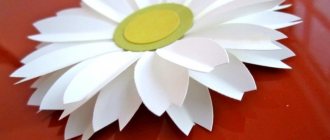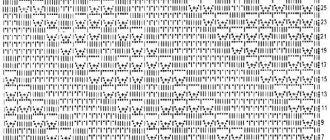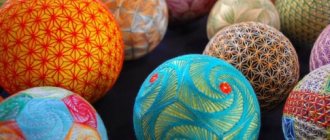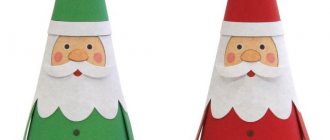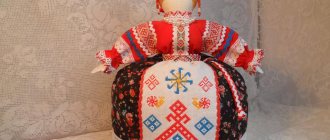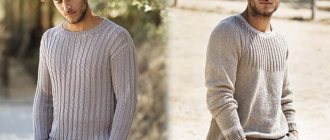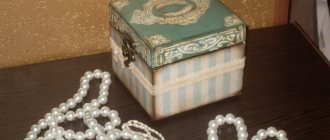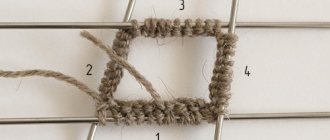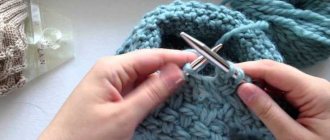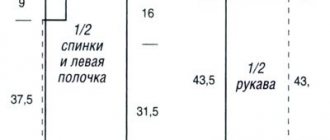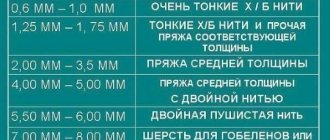Simple crochet collar
The relevance of various knitted collars is undeniable. Not requiring large financial costs and easy to implement, as well as giving many of the products with which they are used a solemn and elegant look, their use is growing every day.
Knitted collars can be worn with:
- traditional black dress;
- closed turtleneck;
- a blouse with a small neck;
- a strict plain dress with a stand-up collar.
To complete them, 1 or 2 skeins of 50 g of fine yarn are enough.
The composition of the thread may vary:
- cotton cotton;
- mercerized cotton;
- cotton containing viscose;
- cotton with silk fibers;
- cotton with lurex.
It is advisable to use a hook in accordance with the thickness of the yarn, No. 1.5-2. This is necessary so that the finished collar has a dense structure and holds its shape well. Crocheting collars (the patterns and descriptions offered in this section are simple options) will not be difficult for even beginning needlewomen.
Crocheting collars - a simple option
To get started, you first need to take only 1 measurement - neck circumference. Next, make a chain of the required length and, carefully following the diagram, begin work. It is important to maintain symmetry at the beginning and end of knitting.
"Vine"
Truly a royal coat. To knit this model you will need: hook No. 2, No. 3.5 and coat crochet hook No. 5, bulky lilac yarn 750 g (50% acrylic, 50% wool; 100 g/280 m), as well as the remains of sectional and lilac threads
We will make a chic brooch from the leftover yarn.
Related article: Beaded figurines for beginners with patterns: master class with video
Beautiful crochet lace collar
Lace collars, the patterns of which are presented below, can be an elegant addition to any plain clothes. Made in any color scheme, they can either create a contrast with the item, or set it off and emphasize the elegance of the chosen composition. The clasp of such collars can be placed both at the front and at the back.
To independently select a pattern for this product, it is recommended to take patterns of round napkins as a basis. If the pattern consists of clear and large repeats, as in the diagram, then by isolating the fourth part from the number of repeats of the pattern and correctly distributing the remaining ones, you can knit an exclusive collar of any configuration and complexity.
Crochet collars - lace collar
If the pattern has clearly defined repeats not at the beginning of the pattern, but at the end, then the number of loops required to start knitting should be calculated based on them. Don’t forget to measure the neck circumference and the length of the chain you’re picking up. The presented collar models can be either sewn to the neck of the product or removable.
The clasp in this case can be designed:
- loop and button
- ties from the main thread,
- decorative brooch or pin.
If necessary, the edges of the fastener, as well as the outer cut, should be tied. If for some reason the finished knitted collar turns out to be larger than needed on the inside, it can be reduced by pulling a braid or cord into the first row and further tightening it to the desired size.
Comfort for a girl
Let's start making a wonderful coat for a girl.
The size is suitable for ages 9-12 months. Materials: 400 g of thin acrylic melange yarn in pink, 6 wooden buttons, crochet hook No. 6. Knit with thread in three folds.
Pattern diagram:
Pattern:
We knit the back. Dial a chain of 46 v. p., knit 1 p. half stitch, s/n and distribute sts next, as follows: *11 half sts, s/n, 4 sts according to scheme 1 (plait), starting from the 2nd r. knit 3 half stitches, s/n, starting from the 2nd row. knit 2 crossed stitches according to pattern 2, 6 half stitches, s/n, repeat from * to * in reverse order. Knit 2 p. and reduce on both sides every 4th r. after 1 chrome. 3 times 1 p. At a height of 29 cm, close the armholes on both sides with 4 p. and knit straight. Finish knitting at a total height of 43 cm.
Right shelf. Dial a chain of 27 v. p., knit 1 r. half stitch, s/n and distribute stitches like this: 7 half stitches, s/n, starting from the 2nd row. knit 2 sts according to pattern 2, 3 half stitches, s/n, starting from the 2nd row. knit 4 sts according to pattern 1 and 11 half stitches, s/n. Knit 2 p. and decrease from the side seam every 4th r. after 1 chrome. 3 times 1 p. At a height of 29 cm, close for the armhole 4 p. At a height of 37 cm from the beginning of knitting, close for the neckline in each r. 7 p., 3 p. and 1 p. Finish knitting at a total height of 43 cm. Knit the left front symmetrically to the right front.
Article on the topic: Crochet beret for a girl with a diagram and description for the summer
Sleeves. Dial a chain of 23 v. p. and knit 1 p. half-staff, s/n. Continue knitting, distributing stitches like this: 8 half stitches. s/n, starting from the 2nd r. knit 2 sts according to pattern 2, 3 half stitches. s/n, 2 p. according to the scheme 2 and 8 semi-st, s/n. Knit, adding on both sides every 4th r. 4 times 1 p. Finish knitting at a total height of 22 cm.
Collar. Dial a chain of 39 v. p and knit half st, s/n, adding on both sides every 2nd r. 2 times 1 p. Finish knitting at a total height of 9 cm.
Assembly. Sew the seams, sew the sleeves into the armholes and sew the collar to the neckline, leaving 5 stitches of each front free. Tie the shelves and collar 1 p. Art. b/n. On the right shelf, make 3 pairs of holes for buttons (overstitch 1 stitch): the first pair is about 1 cm from the top edge, the rest after 6 stitches. from each other with an interval between buttons of 5 p., retreating from the edge of the shelf 2 p. Sew on the buttons.
Practical crochet options for boys:
We crochet a baby's coat, video:
Openwork collar
Crocheting collars, patterns and descriptions of which are presented below, requires increased attention and initial experience.
These models can serve as an excellent replacement for jewelry and costume jewelry. Designed like a necklace and fastened at the back, they add a formal touch to your outfit. Such collars look especially impressive if they are made in white or gold.
It is possible to knit them with the introduction of beads or seed beads into the pattern. In order to do this, before starting work, you should string the required number of glass, mother-of-pearl beads or seed beads onto the working thread. You can also use more expensive Swarovski beads.
Crochet collars - openwork collar
Then start knitting the collar. Having completed a certain element of the pattern or loop and approaching the location of the bead, you should separate one and bring it closer to the main pattern, and move the rest further along the working thread. Then repeat the process until all the beads or seed beads are used. In this model, it is advisable to use a clasp with a hinged loop and a bead button.
In the presented patterns of round collars, you can also use large beads. Its location is possible in the middle of the spikelets or when knitting the outermost row when making the binding.
The color of the beads used depends on the purpose of the collar and its combination with the main clothing. Made in white, it can serve as a standard option for special occasions and for everyday wear with different colored items.
If the collar is initially intended for use with a specific item and is an addition to the main composition, then it can be made in several versions:
- In a lighter tone, but within the same color range.
- Using a shade darker than the main background of the product.
- If you use a collar with a turtleneck or jumper, you can knit it to match the bottom, that is, the color of the skirt or trousers.
- If worn with a dress, it can be done in a suitable contrasting color.
The following collar models presented have the appearance of capes due to the patterns used. They can be used as a decorative finish or as an independent type of clothing. It can be used as a light cape over a sleeveless summer dress, top or sundress.
To perform such models requires some experience and great concentration.
It is important to correctly calculate the initial number of pattern repeats while maintaining the symmetry of the pattern at the junction. Otherwise, the pattern fabric may become skewed and the edge of the fastener may become uneven.
Carefully, strictly following the pattern, knit the first few rows. Then the pattern itself will “show” how to proceed. If the acquired experience is not yet enough to visually see the pattern, then it is necessary to follow the pattern until the end of knitting.
Stand collar
Crocheting collars (patterns and descriptions of models can be seen below) is multifunctional. The artistic purpose of stand-up collars is to give the clothing they are used with a more elegant look.
Crochet collars - stand-up collar
They can be made either in a shortened version - only the stand itself, or with an addition in the form of a large openwork cape. In the first case, the collar will give rigor and restraint to the appearance. If there is a continuation, the image becomes more romantic and soft.
The decorative function of such models helps to create a complete image for a costume or composition. They can be made in the form of velvet, trimmed with beads or beads of various shapes. They are also of no small importance in their cosmetic purpose.
Helping to hide all kinds of skin defects in the neck area:
- scars;
- burns;
- flabbiness;
- dark spots;
- manifestations of psoriasis.
Crocheting collars - stand-up collar
This type of collar will allow women to feel confident and irresistible. The collar models presented below can help needlewomen decide on a style or give a hint for their improvisation. They are fastened at the back with hinged loops and buttons in the form of small beads.
Beauty, and that's all
We knit a bright summer coat from stripes and squares.
The diagram and pattern of the product are presented below.
Another stunning cardigan coat model made from squares:
Here are diagrams of squares and a coat pattern:
Other examples of knitting granny squares are presented in the video:
From pentagons
Knitting collars can be crocheted from motifs, patterns of which and descriptions are given below. To make such models, they mainly use small pentagonal motifs, since during the stitching process they form the circle necessary for collars.
Crochet collars - a variant of pentagonal motifs
Such motifs have clear pentagon boundaries, as shown in the first 2 diagrams. They represent a complete, holistic pattern, enclosed in an openwork mesh of air loops. Pentagonal motifs contain either a floral pattern or the appearance of various geometric shapes.
With further stitching of the motifs into the finished collar, a beautiful composition with a carved edge is formed. At the end of the work, it is recommended to tie it with a small openwork braid.
From triangles
You can also experiment with triangular motifs, which must first be assembled into a pentagon and then combined into a finished product. The uniqueness of this method lies in the fact that when stitching the resulting pentagons together, a complete composition can be obtained in which each subsequent motif will serve as a continuous continuation of the previous one.
Crochet collars - a variant of triangular motifs
As a result, the appearance of the finished collar will give the impression of a seamlessly knitted intricate fabric.
From flowers
Crocheting collars, patterns and descriptions of which are presented in the form of flowers, is not difficult, but looks very beautiful in the product. A prerequisite for a floral motif is the presence of 5 petals. There should be neither more nor less. Otherwise, the round shape of the collar will not be maintained.
Flowers can be made in one color. But to add naturalness, you can use a variety of suitable colors. An interesting option would be to use not only flat floral motifs for knitting collars, but also multi-layered ones. They create a truly charming necklace using real flowers.
Crochet collars - a variant of floral motifs
Starting from the middle, the first, smallest flower is made, to which in the next row, at the junction of the petals with the base, the second and subsequent larger flowers are attached.
The peculiarity of this knitting method is that the thread to make the petal should be grabbed not by the loop of the lower row, but by the connecting post itself from the wrong side. This ensures that the layers of the flower are positioned correctly one after the other.
From the presented diagram it is clear that the central part of the flower is made in a circle, but the subsequent petals, which are arcs of air loops, should be knitted in straight and reverse rows. After one petal is completed, there is no need to cut the working thread, but go down to the base of the flower along the side, making single crochets.
The motifs can be connected to each other either during the process of knitting the last row for every 2 petals of the next flower, or at the end of the work. The color design of such a collar can also be varied.
From hexagons
To knit a collar with a wide neck, you can also use hexagons.
Example of hexagonal collar motifs
In appearance, they can resemble round motifs. But when the elements are wet-heated, they are given the shape of hexagons, fixed with tailor’s needles to the surface in the area of the tops of the flower petals.
From Bruges lace
Collars knitted with Bruges lace look very delicate and beautiful. Its basis is a ribbon made with double crochets and arcs of air loops. There is no difficulty in knitting it, but you should be very careful when creating a simple pattern from it.
Work should begin from the inside of the collar. When knitting a continuous braid, strictly according to the pattern, it is necessary to connect between its sections using arc-loops.
Crochet collars - from Bruges lace
After making the wavy curves that make up the main part of the pattern, you should start tying it with the same ribbon, but without curls. The final finishing of the edge of such a collar can be a row of single crochets.
In the following diagram, the binding is made in the form of arcs of air loops, entwined with single crochets with a pique of 3 loops. The clasp in such collars can be either front or back.
An excellent addition to them would be cuffs, made in a collar-like shape and together making up a charming set. Also, using the Bruges lace technique, it is possible to create a snow-white frill, which will be organically combined with a collar or cuffs.
Tips for caring for collars
Collars should be washed by hand in cool water, with regular powder or yarn powder. Under no circumstances should you throw a collar in the wash, because the product will lose its shape and may tear.
In order to dry the collar, you do not need to hang it on a hanger, as it can stretch under its own weight. Better put it on a towel. After washing and drying, you should starch the collar, as our grandmothers did. With these simple tips, the product will last longer and will not lose its shape.
Crocheting a collar can be a fun hobby; the main thing is to follow the instructions and choose only those patterns that will suit your outfit.
Based on Irish lace
The most complex technique in which collars can be knitted is Irish lace. Consisting of individual and most often small elements, it is difficult to compose it into a single, precisely symmetrical composition. Therefore, before starting work, experienced craftsmen carefully consider the future model and options for arranging motifs in the canvas.
The presented pattern is one of many examples of Irish lace collars. It will not be possible to thoroughly and accurately repeat such models, since needlewomen show their imagination in the knitting process itself. Because of this, when doing your own work, you will have to experiment and come up with something of your own.
If difficulties arise in knitting a symmetrical collar, it is recommended to first try to make an asymmetrical composition of related motifs.
Coming up with an original clasp and a beautiful, unusual collar decoration will delight any woman.
Materials
If a needlewoman decides to try her hand at the simple task of crocheting, then first she should decide on the material. It is best to use yarn with a high cotton content - from 70%.
The hook should be metal, avoid plastic tools, as they will not only break while crocheting the collar, but will also slow down the process due to poor gliding of the threads.
In fillet technique
One of the oldest knitting techniques is fillet. Details made in her style have a special charm and femininity. This diagram shows a set of collar and cuffs with a floral print. Knitting such a pattern is not difficult, but requires close attention. Its basis is a grid of cells, some of which are filled with additional double crochets according to the pattern of the ornament.
It is important to monitor the location of the filled cells in the reverse knitting rows. The models and techniques for crocheting collars presented in this article, as well as pattern diagrams and descriptions of the work processes, can help those who like to dress fashionably and stylishly create their own image and find an individual style in clothing.
Blanks for knitting
Before you start making jewelry, you should create a blank from cardboard. This is necessary so that the craftswoman does not have problems with symmetry when knitting, and the initial measurements are also observed. Moreover, the blank is reusable and will facilitate subsequent work with collars.
To create a blank, you need to take measurements of the neck of the future collar wearer and select the appropriate shape, based on photos of knitted collars.
